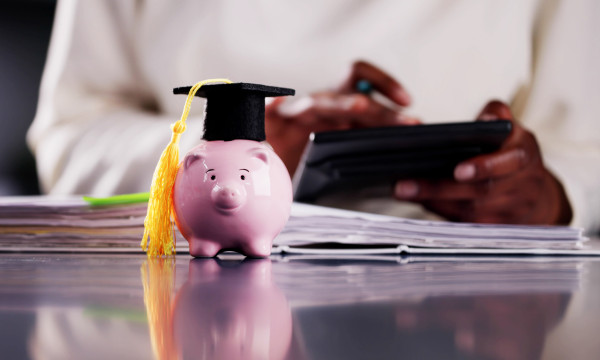What can a bank do for me (and how do I find the right one)?

What can a bank do for your overall finances? Let us count the ways!
First, let’s talk about what a bank does. Remember your childhood piggy bank? How you’d get money here and there and stow it away for a future purchase? A bank is a lot like that, just on a grander scale and with many more features and benefits.
There are so many handy ways that a good bank can enhance your money experience, especially when you have a regular income. Here’s an overall view of how banking works:
- Saving money. You give your money to the bank, and they keep it safe for you. Just like putting coins in your piggy bank, except the money you put into your account benefits from the bank’s robust security and safeguards against fraud.
- Getting or spending money. When you need your money, you can go to the bank (or simply swipe your debit card) and either get it back or spend it. It's like taking coins out of your piggy bank.
- Earning more. Sometimes, depending on your choice of account, the bank gives you a little extra money (called interest) for keeping your money with them. Your piggy bank can’t do that!
- Borrowing money. Banks can also lend you money for small and large expenses. You pay that loan back plus interest (the cost of borrowing money). Again, your piggy bank doesn’t provide that option either.
To summarize, a bank helps you save safely, access and spend your funds, earn a bit more with interest, and borrow money when you need it.
Two main types of banking
To understand banking, it’s important to look at it from two different perspectives: digital and physical.
- On the digital side are online banking options, apps, and all the automated banking bells and whistles that you can control from your smartphone.
- The physical side of banking pertains to the buildings full of the people who do the banking for you.
Let’s take a deeper look at the two (equally important) types of banking.
The digital side of banking
Are you ready for your digital banking era? We love that for you! Modern-day banking customers love having the option of doing their banking directly from their smartphones. Before the advent of digital banking, you had to walk into a bank branch and speak to a teller for every banking transaction — not to mention having to write out checks or have cash in your wallet for every purchase, or balancing your checkbook by hand. Luckily, banking has evolved, and you can do things at your convenience (and from anywhere!) using your mobile device.
- Need to check your balance? Done in seconds through a mobile app, no phone call necessary.
- Have a check to deposit? Skip the teller line and deposit it via your bank’s mobile app by taking a photo of the check.
- Need to transfer funds between accounts? Done in seconds on your phone.
- Want to open an account? In some cases, you can do that online too — often in just a few minutes.
Digital options have revolutionized banking convenience and added ease.
Digital features to look for
On the digital side, look for features like these:
- A quality mobile app with high ratings
- Online BillPay
- Mobile deposit
- Instant transfers
- Zelle® (or an equivalent instant payment system)
- Any other digital piece that helps you better manage your accounts
The physical side of banking
As you drive around your town, make a note of how many banks you see. In most larger cities, there will be thousands of different branches from a variety of banks and credit unions. Most of them offer the same digital perks but the physical branches are still important and necessary.
A bank branch is where you go to do whatever banking isn’t available through your app (and some of the things that are). If you have a $100 bill (cha-ching!) and need three 10s, two 20s, five 5s, and five 1s, you’ll need to stop by a branch.
You might also need to visit a branch for:
- Opening a new account
- Getting a consumer loan
- Requesting a mortgage
- Talking to a financial expert
- Starting a business
- Getting personalized service
Truly, if you need personalized service, having a bank where you can go get your burning questions answered to ensure your transactions are handled accurately is key to the overall banking experience.
What to look for in a physical bank
Here are the things to look for when you’re choosing the bank you’ll eventually visit.
- Convenient locations. Choose a bank with a good footprint in your community so that when you need to visit a branch, there’s one near you.
- ATM availability. Does your potential bank have ATMS in convenient locations so you can grab cash quickly while on the go — without incurring fees?
- Do a vibe check. Are the people working at the bank friendly? Do they seem to enjoy their jobs? Do they answer your questions without making you feel silly for asking?
- Read reviews. Check out what others in your community say about the best banks in town.
- Community impact. Research your potential banks’ values to make sure they match your own. Does the bank give back to the community? Do their people volunteer and give back too?
Choose the best bank for you
The most important thing in finding the right bank is that it feels right to you. If you narrow it down using the criteria above, and they have the products and services you need, you should be happy with the bank you’ve chosen. And don’t worry — if you end up finding an even better bank later, you can always switch!
We might be a little biased here, but we think UBT checks all those boxes above and more! If you think we make sense for you, you can open an account online in less than five minutes or do some physical banking and visit the team at your nearest branch.




